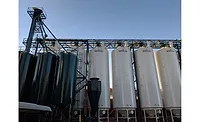Aqueous Ozone: From Cleaning to Sustainability

Aqueous ozone has a long, well-established and well-respected history in the food operations industry. Discussing its merits, an article published in Food Safety Magazine more than 14 years ago reported that aqueous ozone “has been used as a disinfectant in drinking water since 1893, as a food preservative for the cold storage of meats since 1909, and found to prevent the growth of yeast and mold during the storage of fruits in 1939.”[1]
While aqueous ozone is not suggested or recommended to be used as a replacement for a U.S. Environmental Protection Agency-registered disinfectant, at least not in the United States, the authors go on to say that “[aqueous] ozone has enjoyed a long history of use and is known as a broad-spectrum biocide against viruses, bacteria, biofilms, fungi and protozoa.”
The researchers further noted that aqueous ozone is “environmentally friendly” indeed. While they stated this 14 plus years ago, Green Seal®, a green certification organization, has just recently certified the solution—the actual aqueous ozone made by an aqueous ozone system—as safer for users and the environment than traditional cleaning products.
Interestingly, the authors also used a term that is just now gathering interest and use in the professional cleaning industry—“generated on-site.” More commonly called “on-site generation,” this term in the professional cleaning industry refers to the fact that aqueous ozone can be generated and used where needed, when needed by the cleaning professional. And, as of 2016, it has become one of the key selling points for this cleaning technology.
The reason for this is that cleaning work is very labor intensive. On-site generation is viewed as a way to improve worker productivity and with this accomplished, helps reduce cleaning costs.
With on-site generation, cleaning workers no longer need to walk to and from a janitorial closet to gather cleaning solutions. According to some estimates, this walk can take as much as 15 minutes away from their work time, and four “walks” in a shift can eliminate an hour of cleaning work. Nor must they truck a multitude of heavy cleaning solutions on a janitorial cart, just in case one is needed.
In 2002, the authors further predicted that aqueous ozone technology would find a niche when it comes to overall cleaning and sanitation of facilities. And that is exactly where we are. But as we shall discuss, there are other benefits to this technology that food operations managers and food safety experts may find appealing, and at the top of the list is how the technology lends itself to sustainability.
Looking for quick answers on food safety topics?
Try Ask FSM, our new smart AI search tool.
Ask FSM →
What It Is
A recently released aqueous ozone “timeline” indicates that ozone was first uncovered by a Dutch chemist, who in 1785 was “sparking” water with electricity, although he seems to have been unaware of what he was onto. Scientists who followed up on his experiment noticed this sparking caused the same odor that many of us associate with thunderstorms, and this finding led to the discovery of ozone in 1840. Just 10 years later, scientists were already experimenting with using ozone to purify water.[2]
Aqueous ozone can be mechanically created with electricity, water and oxygen. The following indicates how this happens:
- An electrical current is passed through pure oxygen (O2).
- The electrical current separates some of the oxygen molecules into two.
- These spare oxygen molecules attach onto the remaining O2 to create ozone.
- The ozone is then infused into water.
From there, what is now aqueous ozone (because the ozone is now in water) can be poured into a spray bottle, just as a cleaning worker would pour a cleaning solution, or applied directly to surfaces by use of a caddy or a similar roll-about cleaning system.
While the technology is certainly not new, it has taken many years and the work of several research organizations and manufacturers to make aqueous ozone a practical tool for the professional cleaning industry. It was not until approximately 2008 that aqueous ozone was introduced to the industry as an alternative to traditional cleaning chemicals and solutions.
Today, it is garnering considerable attention as an effective and promising alternative to the use of traditional cleaning chemicals. Just as its effectiveness has been proven in foodservice, as discussed earlier, so has it been proven in professional cleaning. The fact that the solution has now been Green Seal certified has only added interest in the technology.
But what is gathering even more interest is how the technology supports sustainability efforts. Products and technologies that further sustainability are now the driving force behind many of the advancements in the professional cleaning industry. That’s because building and business owners believe sustainability is not only good for the environment, it’s darn good for business as well.
The Sustainability Connection
For the past two decades, the big push in the professional cleaning industry has been green cleaning. First advocated by Stephen Ashkin, now considered the “father of green cleaning,” the goal was to reduce cleaning’s impact on cleaning workers, building users and the environment. While it has not been an easy journey, as Ashkin would likely verify, the professional cleaning industry is viewed as one of the most environmentally sensitive and responsible industries in the United States.
Now the industry is moving to the next level—sustainability—and it appears aqueous ozone is playing a leading role. “These technologies are helping us significantly reduce the environmental impacts associated with the manufacturing and disposing of literally tens of millions of plastic bottles, cardboard cartons, [and] paper and plastic shipping materials,” says Ashkin. “This is also helping to reduce greenhouse gases, and they do not require us to extract more raw materials to be used for manufacturing cleaning solutions.”
Ashkin also points out that sustainability initiative have helped all types of organizations reduce waste and operate more efficiently, all of which has helped reduce operating costs. “And because building and business owners are now turning to the professional cleaning industry to help them implement their sustainability initiatives, we can expect to see more organizations adopt aqueous ozone technology as a very green and sustainable way to keep their facilities clean and healthy.”
Matt Montag is sales distribution manager for CleanCore Technologies, manufacturers of aqueous ozone cleaning systems.
References
1. http://www.food-safety.com/magazine-archive1/octobernovember-2002/recent-ozone-applications-in-food-processing-and-sanitation/.
2. http://www.cleanlink.com/news/article/Aqueous-Ozone-A-Well-Known-Technology-Given-New-Life--20294.








